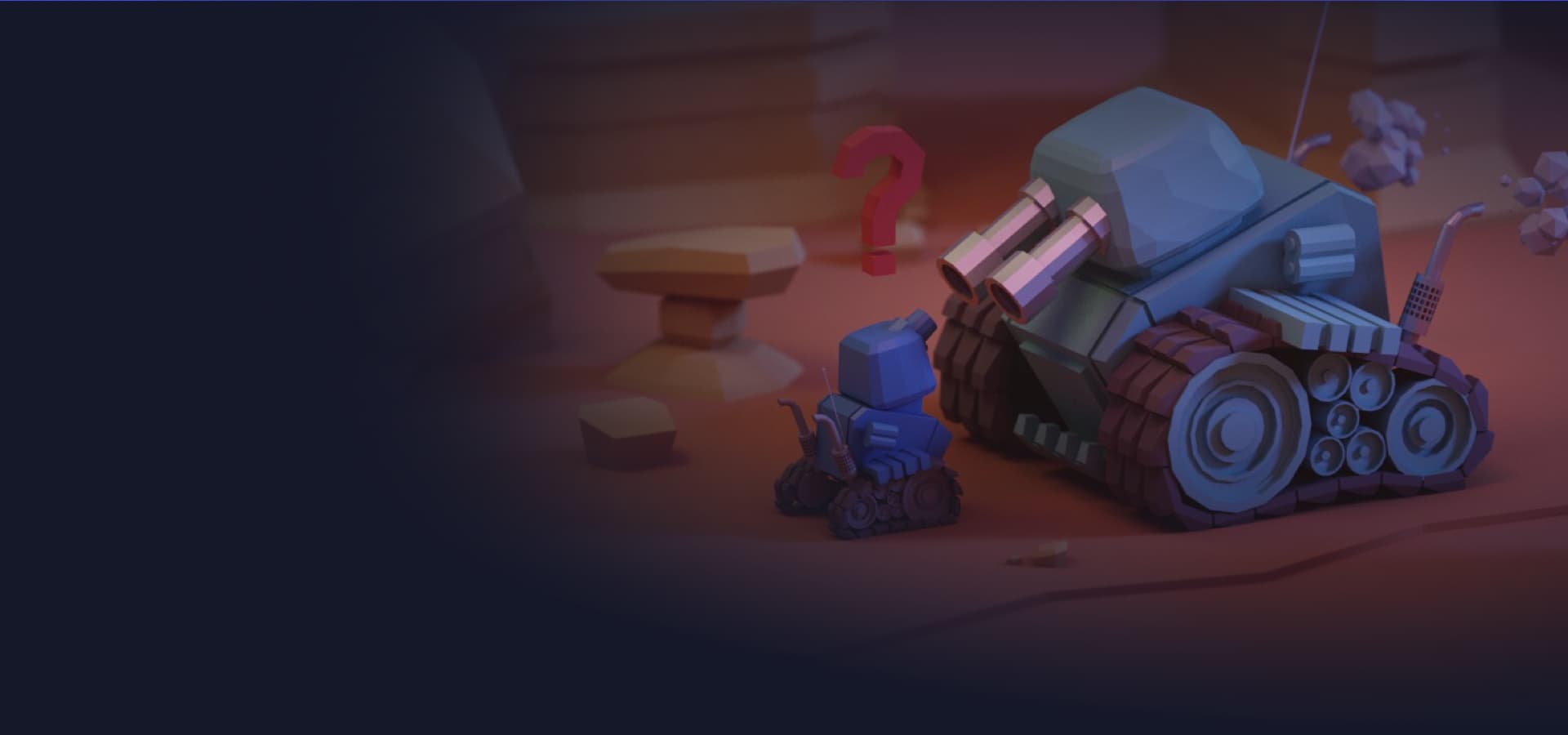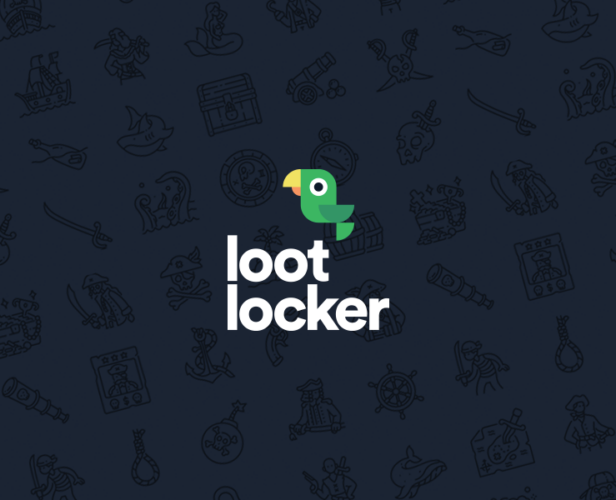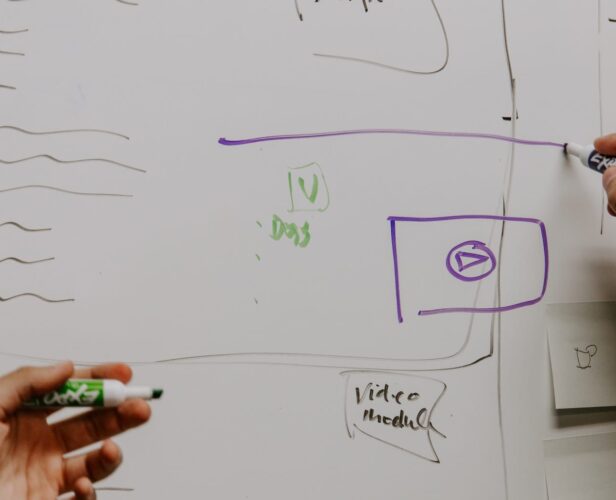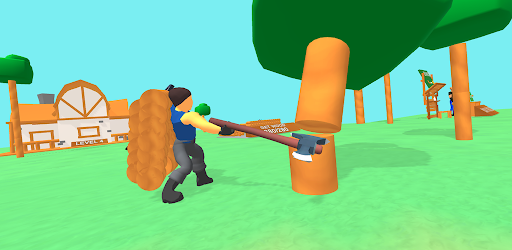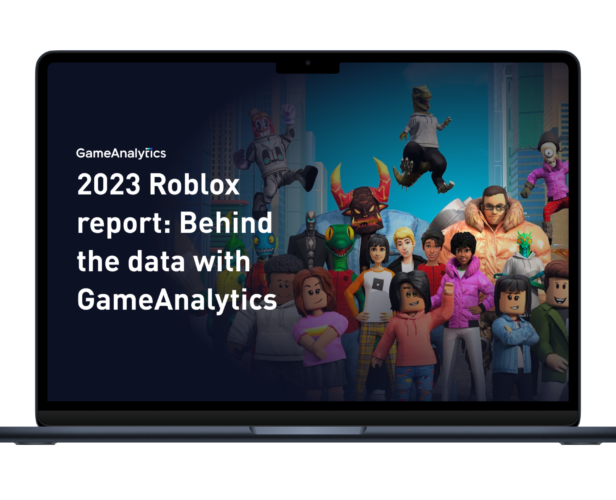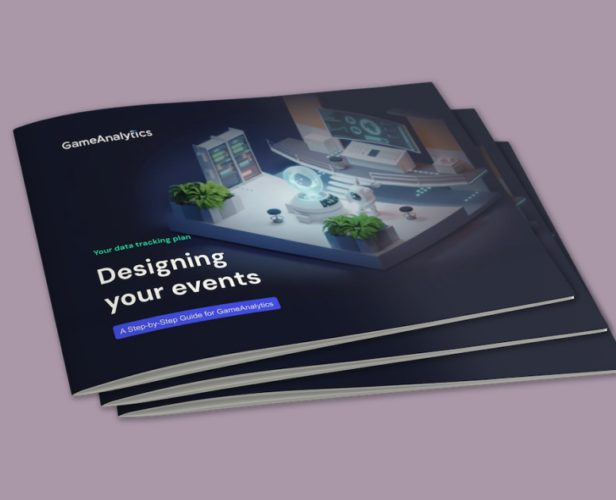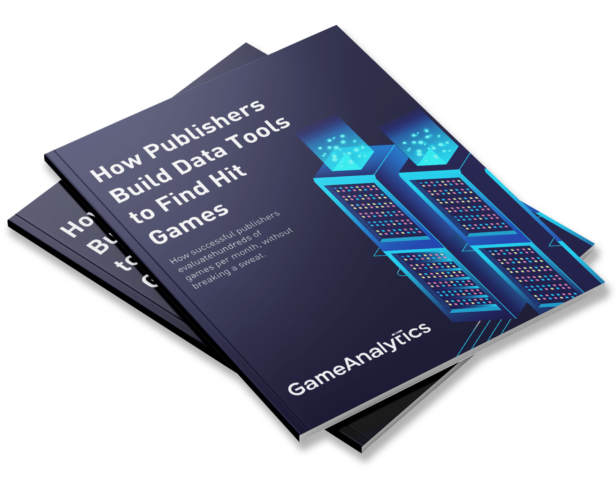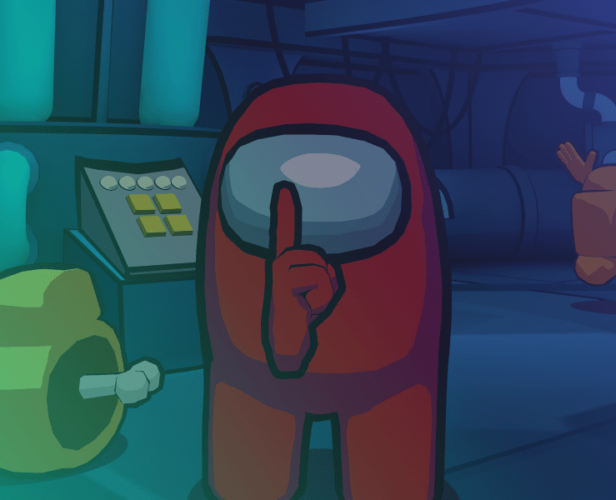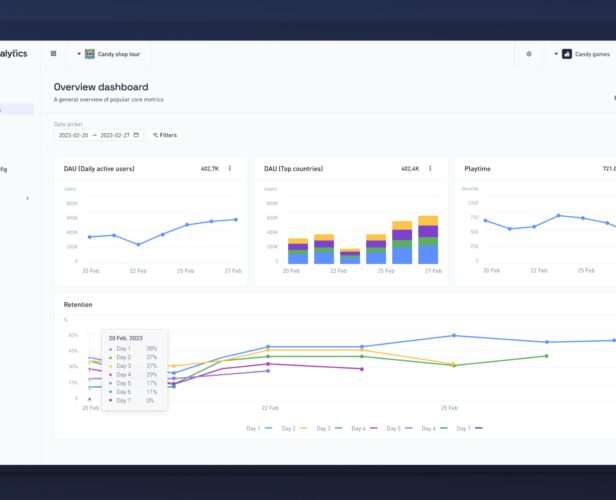Resources > All
Insights and tips about the games industry
Subscribe for gaming insights, industry reports and product updates delivered straight to your inbox.
#Data & Analytics
Sub-Genre Snapshot: Hyper-Casual Games
We break down the top KPIs that Hyper-Casual developers should be aiming for, and reveal a few of the rising superstars that entered the market in 2020.
#Ads & Monetization
CPI or CTR? How to Best Measure Your Game’s Marketability
Editor’s note: This article was originally published by Sara De Vries, Content Creator at Coda. You can find the original article here. When it comes to understanding the potential success of your prototype, market testing is the best way to accurately measure a user’s reception to your game. Most rapid market testing is conducted on social media platforms such as Instagram and Facebook, as they allow you to test the marketability of your game in both an economic and efficient way. The types of campaigns or tests on these platforms can range from tracking traffic to engagement, and from them you can calculate important KPIs such as Click-through-rate (CTR) and Cost-per-install (CPI). A CPI or a CTR test are two different types of tests and both have pros and cons worth considering for your particular stage of development. Keep reading...
#ASO
How To Optimize Mobile Games for the App Stores
Editor’s note: This article was originally published by TapNation. Make sure to check out their version here. The question of how people find your content is a tale as old as the internet. Having the best story or the most innovative gameplay means very little if no one can find it, never mind play it. Which is why ASO (App Store Optimization) is so important. It plays a crucial role when publishing your game. And it isn’t as time-consuming or complicated as you may think. At TapNation, we help make sure new players find your hyper-casual games by using the best ASO techniques and most effective marketing strategies. If you have great intuitive gameplay, we want to make sure everyone in the world is playing it. But if you’re just looking for some simple advice to get you started, well...
#Game Deconstructions
Arcade Idle: A New Hyper-Casual Genre Enters the Game
In the last few years, the Hyper-casual genre has established itself as one of the fastest-growing game categories on the app stores, not only in the number of downloads but also in the quantity, variety, and originality of new products. Beginning as a subgenre of casual, Hyper-casual has consolidated as a category in its own right and started accommodating subcategories like ultra-casual, idle, mergers, and so on. Some of these subgenres have become classics, but we can see a new genre emerge in the Hyper-casual scene from time to time. Constant testing and iteration lead to permanent game upgrading and improvement, translating into new, different games and hybrid genres. This was the case for Farm Land, developed by studio LolTap: Homa Games’ latest release and member of the new Arcade Idle category. The process began in late 2020 with the...
#Game Deconstructions
How Game Worthy Hit a 66-Minute Average Playtime With City Takeover
Editors note: This article was written by the publishing team at Voodoo. You can check out the original version here. How do you take a strategy-based, connect & conquer style game, and transform it into a successful hyper-casual hit? Game Worthy, a Vancouver-based studio composed of programmer Kaue and game artist Fred, managed to do just this with their latest game, City Takeover. Hitting outstanding KPIs and entering the top 100 iOS US immediately upon its release, this game is nonetheless very different from other games in the genre. It demands a bit more thought, concentration, and strategy… in other words, it’s more difficult than your typical hyper-casual game. Read on to find out how Game Worthy, teaming up with Voodoo, managed to transform one of their favorite childhood games into a hyper-casual hit. Ideation & inspiration Here at Voodoo, we...
#Guides
Picking a Backend – Why It’s Vital, and How to Pick One
That’s a fairly obvious statement. Lavish visuals and meticulous game design are nothing without the likes of quality code and robust AI. But there’s another layer that sits behind everything else that’s equally important – particularly in the era of games as live entities. Simply put, you absolutely need a quality backend for any connected game to thrive. That’s true whether you have online multiplayer to consider, a connected user community to serve, or the likes of seasonal events and updates to consider. Equally, an intuitive backend can both accelerate and optimize your game development workflows, making the likes of achievements and social integration, leaderboard implementation, or in-game currency creation a trivial task. If any of those factors are part of your game, a backend is arguably as important as your chosen engine. Can I make my own backend? It...
#Strategies
5 Techniques to Supercharge Your Ideation
Editor’s note: This article was originally written by Sara De Vries, Content Creator at Coda Games. You can find the original here. In hyper-casual gaming, coming up with the next hit game idea can be one of the most challenging parts of game development. Choosing the right game idea is crucial to avoid losing time and money spent building an unsuccessful game. So what exactly is the best method for game ideation in hyper-casual and how can you start implementing it today? Luckily, we sat down with our gaming experts here at Coda to understand the best methods developers can utilize in the initial ideation phase to help increase their chances of success in publishing. 1. Monitor Trends One misconception when it comes to game ideation in hyper-casual is that your game idea needs to be entirely brand new. This...
#Guides
Access All Areas: How to Make Your Game More Accessible
As developers, accessibility is often one of the last things we think about – that’s if we think about it at all. Which is a shame, because we could be alienating a huge group of players. The good news is that making a mobile game more accessible really isn’t difficult. Hang on – what’s accessibility? Before we get into the details, let’s talk about what accessibility actually means for developers. It’s about designing apps that all people can easily use, regardless of whether or not they have a disability. So that’s things like including subtitles for the deaf or hard of hearing, or adding options for people who are visually or cognitively impaired (among other things). Simple, right? And when you look at it like this, it’s a bit of a no-brainer. Why wouldn’t you want the widest range of people...
#Data & Analytics
How to Improve Your Game KPIs and Boost Revenue – Lessons From Bubble Sort
Editor’s note: This article was originally published by Kinsey Dardanus, publishing expert at TapNation. You can find their version here. Bubble Sort is a worldwide leading puzzle-game, on both Android and iOS, totaling more than 15 million players across the world. We originally launched this game on December 19th 2019, and since then we’ve been at the top for a whole month. But what’s the secret sauce behind this game’s success? The short answer: deep player behavior analysis, and lots of level difficulty improvements. But there’s much more to it than just that. At TapNation, our data scientists and engineers have developed tools and algorithms to monitor, analyze and test our gameplay and difficulty curves in order to improve our KPIs. And in this blog, we’ll give you a sneak peek behind the curtain, and share some of the techniques...
#Data & Analytics
Making Better Game Decisions with Feedback Testing
You might be familiar with the concept of split testing. Also known as A/B testing, split testing compares different versions of your assets to see how each performs with your players. At the conclusion of your test, you adopt the variant that showed the best response. Split testing is a critical part of the game development process. It’s pretty much baked into any user acquisition campaign, with ad creatives and app store assets quick and easy to A/B test. But a traditional split test’s quantitative data can only tell you so much. And this kind of testing is only possible once the game is up and running. That’s why feedback testing is so important. It provides qualitative data to show you the why behind what is and isn’t working. What is feedback testing? Feedback testing is essentially surveying players to...
#Data & Analytics
Top UA Tips for Testing New Hyper-Casual Games
When you’re developing a hyper-casual game, it’s not enough to just publish it and hope it takes off. You need to do extensive, iterative testing to get an indication of the best possible UA performance as well as in-game metrics. So where to start? Here are our top tips for maxing out your metrics: Know what you’re testing for and what KPIs you’re looking at Vague testing methods will only get you vague results. The first thing to decide on is what the purpose of your test is. Are you running a marketability test? Exploring a game concept? Or are you testing creatives? Once you’ve decided what question you’re trying to answer, be clear on what KPIs you’re going to measure with. Is it the CPI? IPM? CTR? Retention? You need to know all of these before you start testing....
#Game Deconstructions
How Noor Games reached a D1 Retention of 62% with the Game Lumbercraft
Editor’s note: This article was originally published by Voodoo. You read the original version here. Lumbercraft, the hit game by the studio Noor Games, is not a typical hyper-casual game. With a successful fusion of a core hyper-casual game mechanic and more casual objectives, Lumbercraft is a great example of innovating in the hyper-casual sphere and exploring the possibilities when thinking of the up-and-coming hybrid-casual space. Let’s take a look at the studio behind the game, the game mechanics, and some key takeaways from the development process. Noor Games are a 5-person studio from Armenia and have been working with Voodoo for over a year, regularly tuning in to our live streams and keeping up to date with our resources for studios looking to create hit hyper-casual games. Thanks to their hard work and commitment in the hyper-casual sphere, their prototypes have...
#Game Design
5 Simple Ways to use Level Design to Improve Player Experience
Games have a great deal to learn from the likes of architecture, town planning, and even the layout of theme parks. That’s especially true when it comes to level design. A 3D adventure game, for example, is a space designed to be moved through; just as is the case with a city centre or a Disney resort. Head to Walt Disney World in Florida, and Space Mountain stands out from its surroundings, visible from multiple vantage points. That’s entirely deliberate. Its vertical height contrasts sharply with its environment, drawing the visitor’s eye. And yet most of the park’s paths to Space Mountain are indirect, taking looping, curving routes. The idea is that visitors are never told where to go. Instead, Space Mountain’s constant presence gently pulls people towards it. Those winding paths, meanwhile, give a sense of exploration and discovery....
#Editor's pick
Game data pipeline: Building vs buying
As a large number of studios, publishers, and game developers are heavily relying on data to guide their decisions, they need to decide between building or buying. But which one is more efficient? To assist you in understanding the Total Cost of Ownership (TCO), we broke down the following key considerations: Setup requirements Cost calculation Team needs and recruitment
#Editor's pick
Mobile gaming benchmarks for Q1 2024
Uncover the industry’s performance with Q1 2024 benchmarks. Explore key metrics like retention rates and session engagement to benchmark your games against industry standards. What’s inside? Retention benchmarks for casual, classic, and mid-core games Session length benchmarks for games launched in North America, Europe, the Middle East, and Asia Session count benchmarks across 15 game genres
#Editor's pick
Grow your revenue with Xsolla Web Shop for Mobile Games
“Xsolla anticipated this seismic shift earlier this year, when we launched multiple products that are being actively used by some of the world’s largest game companies to increase profit and build closer relationships with their mobile and pc players. We’ve now combined these products and learnings into an elegant new solution called Xsolla Web Shop for Mobile Games,” said Chris Hewish, President of Xsolla. Through Xsolla Web Shop for Mobile Games, developers can expect significant revenue growth and can reach new players in new geographies previously unavailable to them. This solution solves many challenges developers face; such as discoverability, declining profit margins, lack of control over the user experience, access to localized payment methods, cross game marketing, more efficient user acquisition, effective collaboration with creators and influencers, and much more. Three industry-changing announcements make this opportunity more timely than ever:...
#Editor's pick
2023 Roblox report: Behind the data with GameAnalytics
Download a comprehensive report of Roblox player behavior and game performance based on GameAnalytics data from 2023. This report highlights critical benchmarks and insights to help Roblox creators optimize their games. What’s inside? Devices analysis Players’ daily session frequency Average revenue spent per user Session length and count benchmarks Retention benchmarks Revenue benchmarks
#Editor's pick
The Game Developer’s Handbook to Mastering Data Solutions
Data is the key to success in the ever-evolving landscape of game development. Explore this guide to transform your data into insights using our turn-key data solutions. What’s inside? Our comprehensive guide explores cost-saving strategies and real-world applications for advanced use cases. Learn how to seamlessly integrate data sources, unlock detailed player insights with Player Warehouse, access real-time data with Raw Export, and ensure data privacy compliance.
#Case study
Developing a #1 VR MMO: Ramen VR’s Journey with GameAnalytics
Discover how Ramen VR used data-driven game development to launch "Zenith: The Last City", which became the #1 bestselling game all major VR platforms—including Meta Quest/Rift, Steam and PlayStation VR.
#Editor's pick
Using AI to Supercharge Your Game Art Design
Discover how tweaking AI tool settings can help you generate varied art styles, produce better concepts, and speed up the process from prototype to final design. With AI on your team, creating unique game art has never been easier or faster.
#Editor's pick
Event Design & Tracking Guide for GameAnalytics
Learn how to create an adaptable tracking plan, enabling you to unlock richer insights and maximize the value of your data within GameAnalytics.
#Editor's pick
How studios use DataSuite to find hit games
Learn how successful publishers evaluate hundreds of games per month, to find the next hit game.
#Editor's pick
Among Us VR dev talks about how to create immersive worlds
VR is all about immersion. It’s about allowing players to lose themselves in more than just a game, but a new world. You have to build VR experiences the right way to make this happen. This goal is always top-of-mind for Schell Games. In this interview, we spoke to Schell Games’ Vice President of Product, Charlie Amis, to learn their story. “For VR, you want to make the player feel like they’re actually in the world you’ve created. This isn’t as true or a high priority in PC and console games. If people start to lose that sense of presence and immersion, then a lot of the reason they put the headset on is hurt. They want to go to another world or be someone new. So you need to help them feel like they’re really there and really that...
#Editor's pick
GameAnalytics H1 Update: New Product Improvements!
It’s been a busy time since February, when the largest update in GameAnalytics history was launched. Read on for more information about what’s changed recently, and new functionality coming to the platform very soon.
#Case study
How TapNation uses DataSuite to increase the LTV of 19 hit games by 50% in only 6 months
Smashing obstacles with Giant Rush While they’ve seen huge improvements using DataSuite across their portfolio, one game stands out in particular: Giant Rush. (And not just because the character is huge.) The title has now reached over 140 million downloads. And, through a series of A/B tests and insights from the data they collected, they’ve been able to increase the LTV by a whopping 200% over six months for this specific title. “It’s because we A/B test every day,” Philippe Grazina from TapNation says. “We ask questions like: When are players leaving the game? For example, the boss in Giant Rush. If we spot that they’re leaving at the same point every time, we know we need to make a change. Small details like that really help.” Through these granular insights, TapNation can iterate and improve on their game step...
#Editor's pick
How to Build a Data Warehouse for Games from Scratch
Over our last couple of blogs around data warehouses, we’ve explained how they let you analyze data from across your portfolio and look at what insights you can gather from them. Now, we’ll dive into how to build a data warehouse. What steps do you need to take and what resources will you need? To figure this out, we’ve rounded up the costs, steps, and tools we think you’ll need to get started. Please note, that we haven’t included the cost of running an engineering department (which you’ll need), which can end up being a lot of $$$. What do I need to get started? Before you start, you’ll need to ensure you have the right people. You’ll likely need a software or data engineer, and perhaps an architect or DevOps engineer. You’ll also need to budget for tools like...
